10 of our favorite Ford V-8s
2023 marks 120 years since Ford Motor Company was founded—on June 16, for you history buffs—and 20 years since Ford built its 100,000,000th V-8 engine. Since then, the company has made an increasing commitment to smaller, forced-induction engines. However, it certainly hasn’t given up on the V-8: The Blue Oval produced some of its best in the last 10 years.
Ford Motor Company’s 120th is a great time to look back at the company’s long history of building powerful V-8s, engines that won races, won customers, and even won wars.
Here are our favorite Ford engine families, with some standout models worth celebrating.
Flathead
1932–53 and beyond

This is where it all started. The Flathead wasn’t the world’s first V-8, and, with just 65 horsepower, it wasn’t the most powerful engine on the market in 1932, either. However, when the beautiful lines of the Ford Model 18 were met with the power of the compact Flathead V-8, the automotive world reached a milestone.
It’s hard to overstate the importance of the Flathead: In its wake, a whole industry of hot rod parts sprang up to feed racers’ need for speed. Even though the engine was phased out in the United States in 1954 in favor of the Y-block, the Flathead lived on elsewhere, notably in France and Brazil, where it was manufactured under license for passenger-car use into the ’60s. Even today, vintage hot-rod enthusiasts use the engine to power land-speed cars in classes that use the vintage castings—modern overseas castings aren’t allowed by the Southern California Timing Association.
GAA V-8
1940–1960
Before the U.S. entered WWII, Ford began developing its own spin on Packard’s version of the Rolls-Royce Merlin V-12. The powerful Packard Merlin V-12s, supercharged for aircraft use, would be used in some of the most successful fighters of WWII, including the Supermarine Spitfire and North American P-51 Mustang. Unlike Rolls or Packard, Ford never built a V-12 for aircraft; it engineered the powerplant for tanks.
Ford developed a V-8 using the architecture of the Packard V-12 and the same 5.4-inch bore and 6-inch stroke. The result was a 1000-cubic-inch monster that served in a number of tanks and tanks destroyers such as the M4A3 Shermand and M10. Ford’s 500-hp V-8 was compatible with the same vehicles that used a pair of GM diesel engines. Ford did build full, V-12 versions of the engines for large tank prototypes toward the end of the war, but those twelve-cylinders never reached production.
By the way, these mid-century, DOHC engines use flat-plane crankshafts, so don’t let anyone tell you that the screaming 5.2-liter Voodoo was a first for Ford.
MEL
1958–67

Was there a better way to christen Ford’s newly minted Mercury-Edsel-Lincoln (MEL) division than with its own V-8 engine? Much like GM’s Buick, Oldsmobile, Cadillac, and Pontiac divisions, Ford decided MEL could have an engine significantly different than the FE (Ford-Edsel) engine introduced at the same time. While the MEL V-8 shared some internals (like oiling components) with the FE, the MEL was a shockingly unique design with “flat heads” that differ from those of the original Ford V-8.
Like its contemporaries, the MEL was an overhead valve design. However, while most engines of the era had cylinder heads with a combustion chamber machined into them, the MEL sported a space between the piston and the top of the cylinder’s bore, like Chevrolet’s W-series big-blocks did. From some angles that combustion chamber looks like a triangular wedge, not unlike the grille of the star-crossed Edsels that represent the “E” in MEL. Which clearly foretold a short and sad future for this engine.
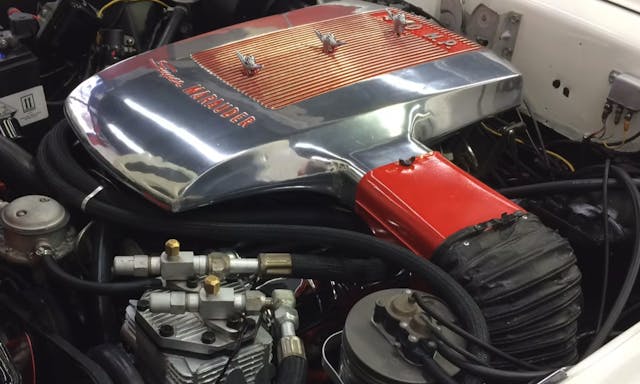
For one shining moment, the MEL was the head of its class. The Super Marauder engine for 1958 sported three carburetors, an aluminum air cleaner, 430 cubic inches of displacement, and a shocking output of 400 horsepower. This was the first production engine to reach the magic horsepower number of 400, but Ford detuned it in 1959 and subsequently gave up the throne to other manufacturers. While Ford wised up and consolidated both its engine and vehicle-brand lineups, the loss of the MEL could only be eased by future big-block Ford V-8s.
FE
1958–76

Though Ford’s FE engine was built to power mid-size cars and light trucks, it evolved into several vastly different race-winning combinations. Initially launched as a 300-hp, 361-cubic-inch Edsel powerplant (FE stands for Ford-Edsel), the FE soon spread to Ford models in 332- and 352-cubic-inch displacements. However, you’re probably familiar with some of the larger displacements.
Ford’s 1-2-3 finish at the 1966 24 Hours of Le Mans came from three 427 FE–powered GT40s. The 390 that powered Lieutenant Frank Bullitt’s 1968 Mustang fastback was an FE. Shelby’s legendary 427 Cobra used an FE. Not bad bona fides for a performance V-8.
While Ford was already doing well in ’60s NASCAR competition against Chrysler’s 426 Hemi with their wedge FE cylinder heads, they still decided to get into the hemi game. It developed a single-overhead-cam version of the 427. The 427 SOHC was unfortunately banned from NASCAR competition but the few that were built saw use at the dragstrip.
From NASCAR superspeedways and NHRA drag strips to the Mulsanne Straight, the FE found success and brought home championships. It still has a niche aftermarket following and can be built into a formidable street or race engine.
Windsor
1960–2002

Ford’s compact OHV V-8 of the ’60s lived long enough to survive the malaise era and, as EFI took over for carburetors, the engine breathed life into a resurging performance market. We can’t pick one favorite from this fruitful family, which earned its nickname from its Canadian city of origin. K-Code 289s made a potent, high-winding package for early Mustang and Shelby GT350 road racers, and 1986’s sequential port fuel-injected 5.0 kicked off a performance industry of its own—who doesn’t love that fantastic, long-runer intake? In between those bookends is the yeoman 351, which served well in cars and trucks for decades.
Windsor V-8s were produced into the 21st century and used in Ford trucks. The Explorer was one of the last to use the engine, getting one of the best factory versions of the 302 using a potent set of heads that are prized by junkyard scroungers.

335 Series, aka Cleveland
1969–82

If you thought we forgot about the Boss 302, don’t worry. Known to enthusiasts as the “Clevor,” the famed Mustang Boss 302 engine was a melding of Windsor (bottom end) and Cleveland (top end). The two mills have the same bore spacing, so swapping on the big-valve Cleveland heads wasn’t a major undertaking. It was those free-breathing heads that made the engine special, so we’re including it here.
Although short-lived, the Cleveland engine family has a devoted aftermarket. The 351 and 400 engines in particular have great performance potential. The 10.297-inch deck height of the 351M and 400 Cleveland blocks makes it possible to drop in crankshafts with longer strokes, making either of these Clevelands a better candidate for a high-displacement small-block build than a 289 or 302 Windsor, each of which has a standard deck height of 9.2-inches, or even the 351 Windsor, whose deck height ranges from 9.48 to 9.503 inches (it grew taller in 1971). Ford fans in Australia love the Cleveland engine and some of the best aftermarket parts for these engines come from down under.
Indy V-8
1963–71

Lotus cars powered by Ford V-8s were some of the best-looking Indy cars of the 1960s. Displacing 256 cubic inches, the DOHC 90-degree V-8 was built to rev, and it sounded amazing. Its hot-V layout placed the intake runner between the camshafts and the exhaust ports in the valley between the heads, making for a beautiful exhaust system that was only practical in a mid-rear-engine design. In 1965, Jim Clark’s Ford-powered Lotus became the first mid-rear-engine car to win the Indianapolis 500, ending Offenhauser’s 18-year win streak.

385 Series
1968–98
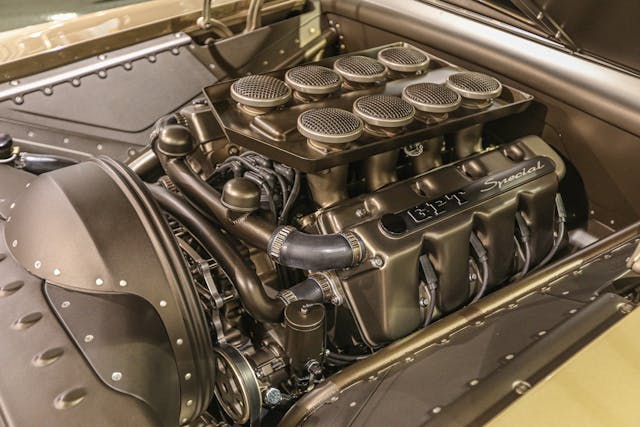
Like the large-displacement big-blocks of Ford’s competitors, most of the 385 Series V-8s found their way into heavy passenger cars or 3/4- and 1-ton pickups, a workhorse role they filled into the 1990s, when the 460 V-8 was installed into scores of Super Duty trucks. However, the 385 Series—so named because of the 460 V-8’s 3.85-inch stroke—also gave birth to the 429 V-8, which used the same big, 4.36-inch bore but paired it with a 3.59-inch stroke.
The Boss 429 used the same bore and stroke combination but added monster heads with huge valves. Rather than placing all of the valves in a line, which is typically the case in wedge-shaped combustion chamber heads—shown below, on the left—the Boss 429 used hemispherical combustion chambers with valves canted away from each other. These rare V-8s are valuable collector’s pieces today, but aftermarket heads are now available to get the look and performance using a standard 385 Series bottom end.
Modular
1991–present
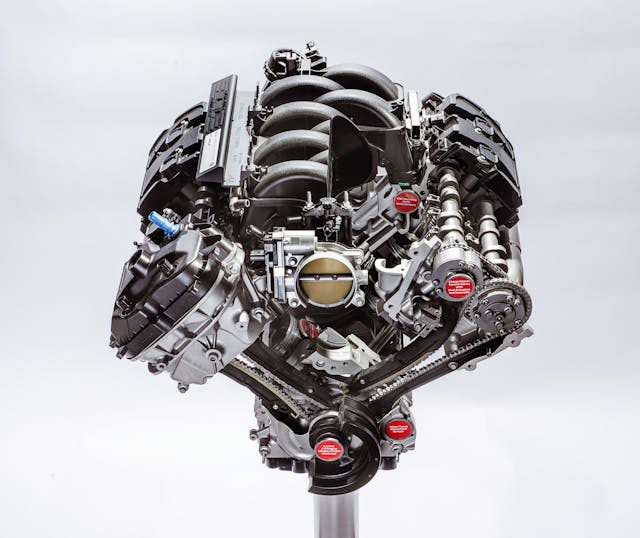
Plenty of Mustang enthusiasts were sad to see the 5.0 get replaced by the 4.6-liter two-valve, and we can’t blame them. When it launched, the Modular engine family didn’t have the huge aftermarket that the popular 5.0-liter Mustang GT had helped cultivate. In time, however, came better performing heads with three and eventually four valves per cylinder as well as increased displacement. The four-valve 4.6-liter was a solid performer, and plenty of drag racers have done impressive work with them, but it was the 5.0-liter Coyote that really cemented the Modular’s legendary status.
The 5.2-liter Voodoo engine found in the GT350 was the peak of naturally aspirated Modular performance at 526 hp. Swapping its flat-plane crank for a cross-plane piece and adding a massive supercharger created the 760-hp Predator engine found in the GT500. To this day, the Predator is Ford’s most powerful production engine.
Godzilla
2020–present
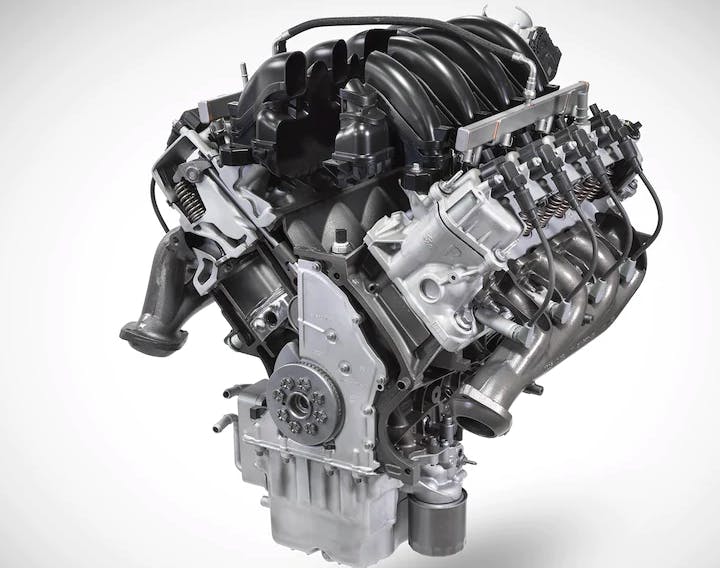
Ford has been all-in on OHC engines for passenger cars for decades, but it knew gasoline trucks need large displacement engines for making plenty of torque at low speeds. As the venerable 6.8-liter V-10 and 6.2-liter “Boss” SOHC V-8 were being phased out, a replacement was in order.
Enter “Godzilla,” a 7.3-liter monster that brings modern cylinder-head flow and precision manufacturing to a pushrod, two-valve V-8. In crate-engine form, it produces 430 hp and 475 lb-ft of torque. It is the largest V-8 currently produced by Ford and yet it has 4.53-inch bore spacing, meaning Godzilla is more of a small-block than a big-block.
We’re not sure how the aftermarket will respond to this engine, as it will be built in relatively low-volume due to its limited truck applications. That said, it’s still a big V-8, and all the usual hot-rodding tricks—like camshaft upgrades, cylinder head porting, and bolt-on exhaust headers—apply. We’re looking forward to seeing more of these engines under the hoods of classic Ford restomods in the future.
Those are our 10 favorite Ford engines, but of course, there are some that didn’t make the cut due to our arbitrary sense of taste. If you love either flavor of Y-Block, or perhaps a high-revving Ford NASCAR FR9 engine, make a case for it in the comments below.
***
Check out the Hagerty Media homepage so you don’t miss a single story, or better yet, bookmark it. To get our best stories delivered right to your inbox, subscribe to our newsletters.


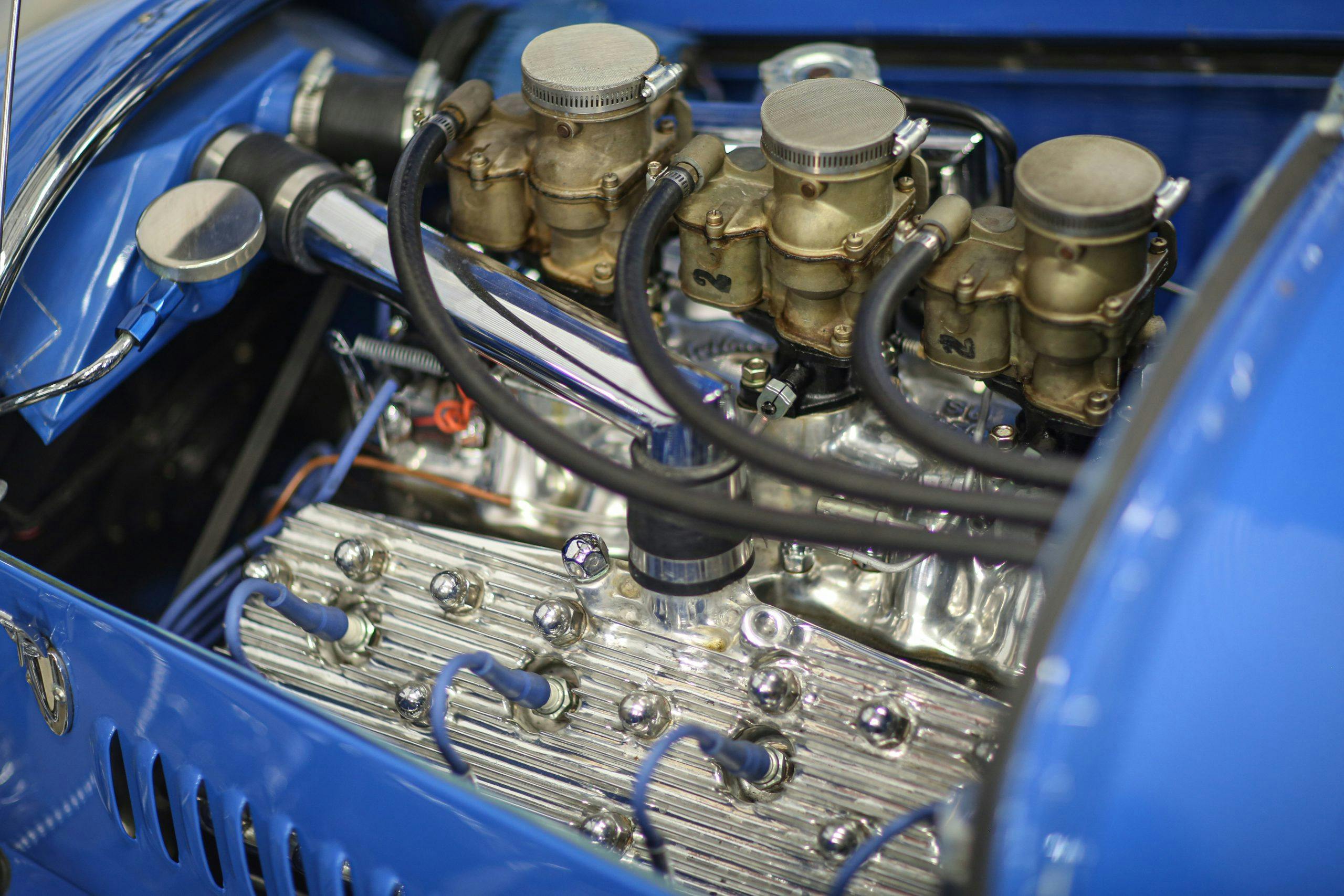
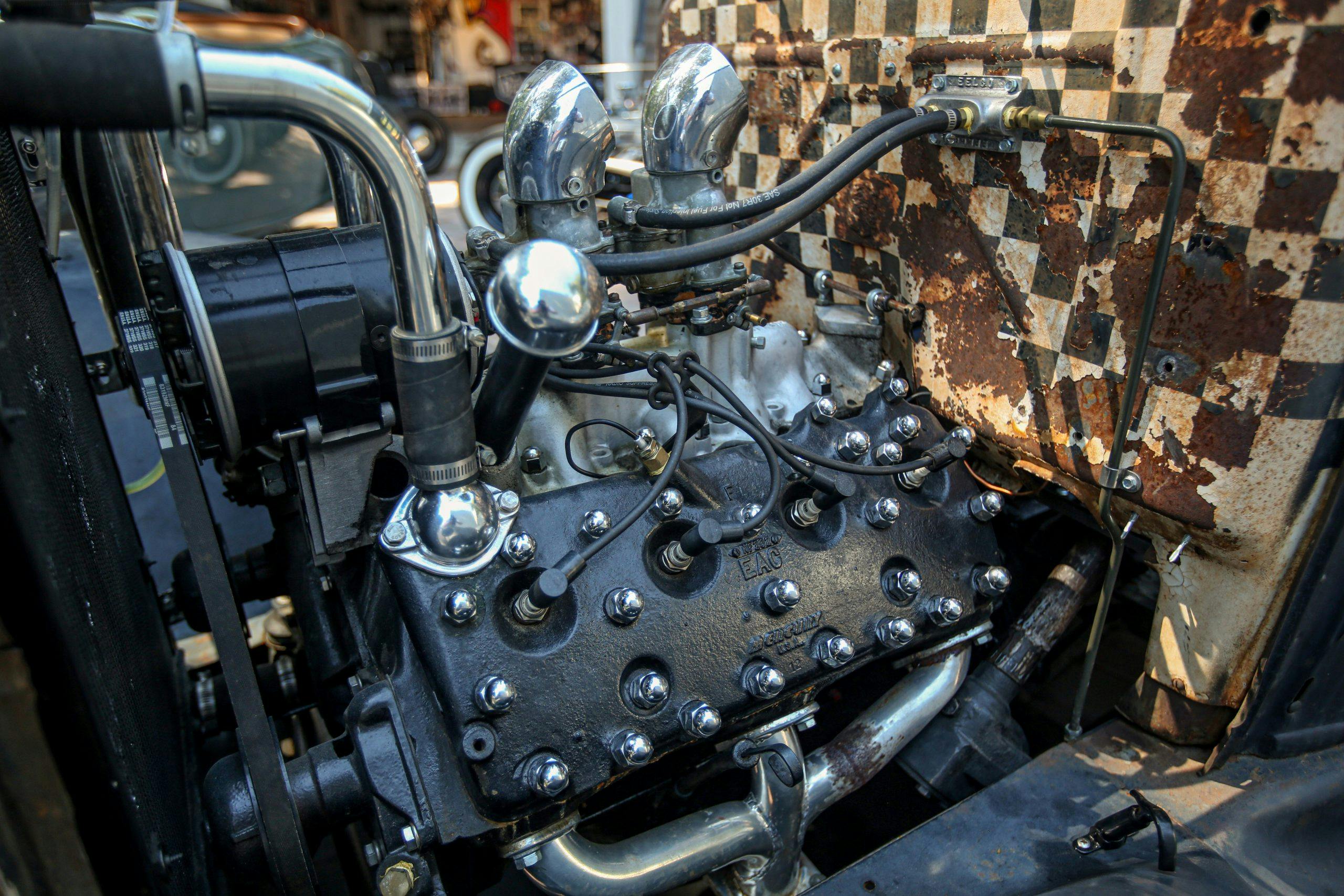
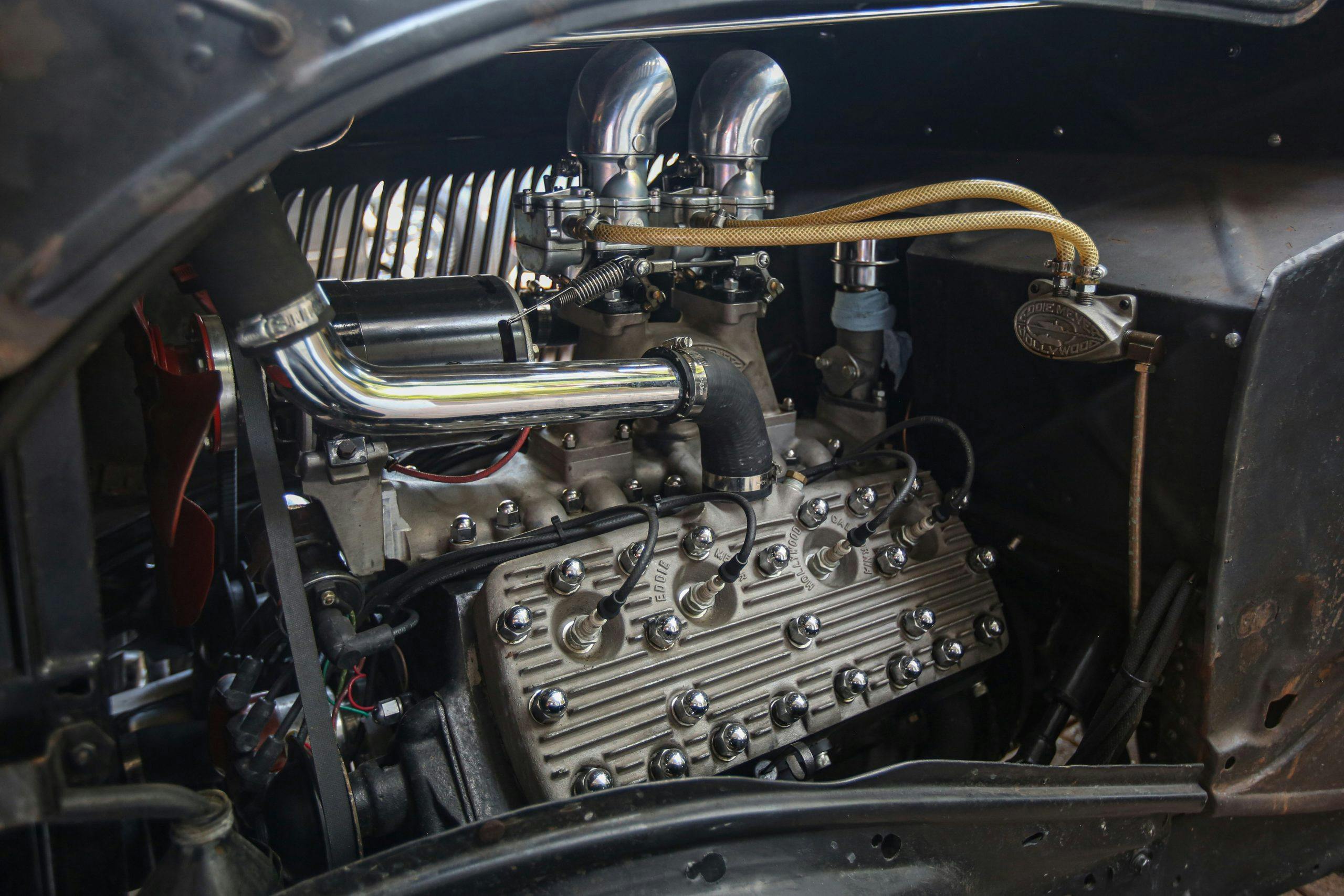
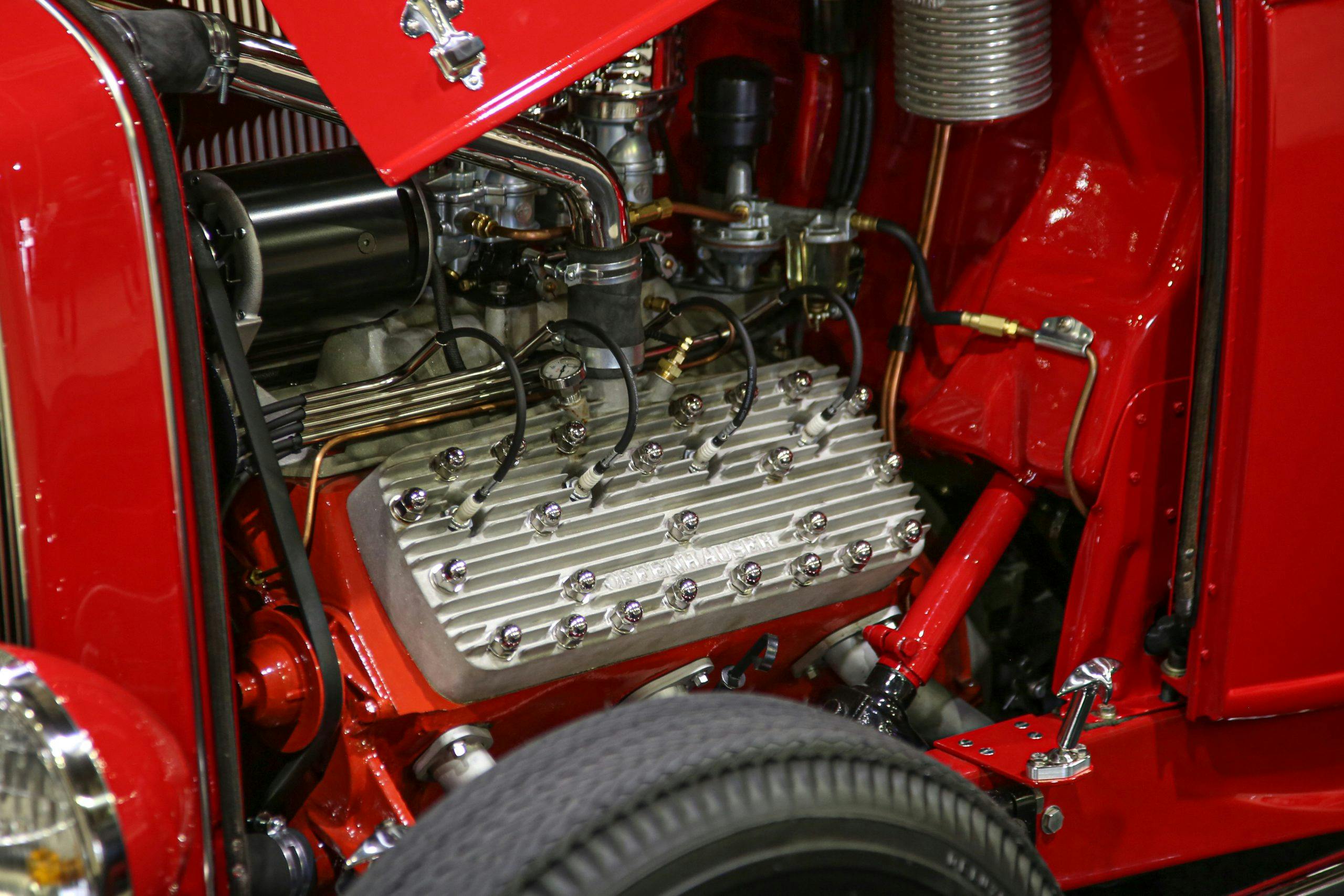
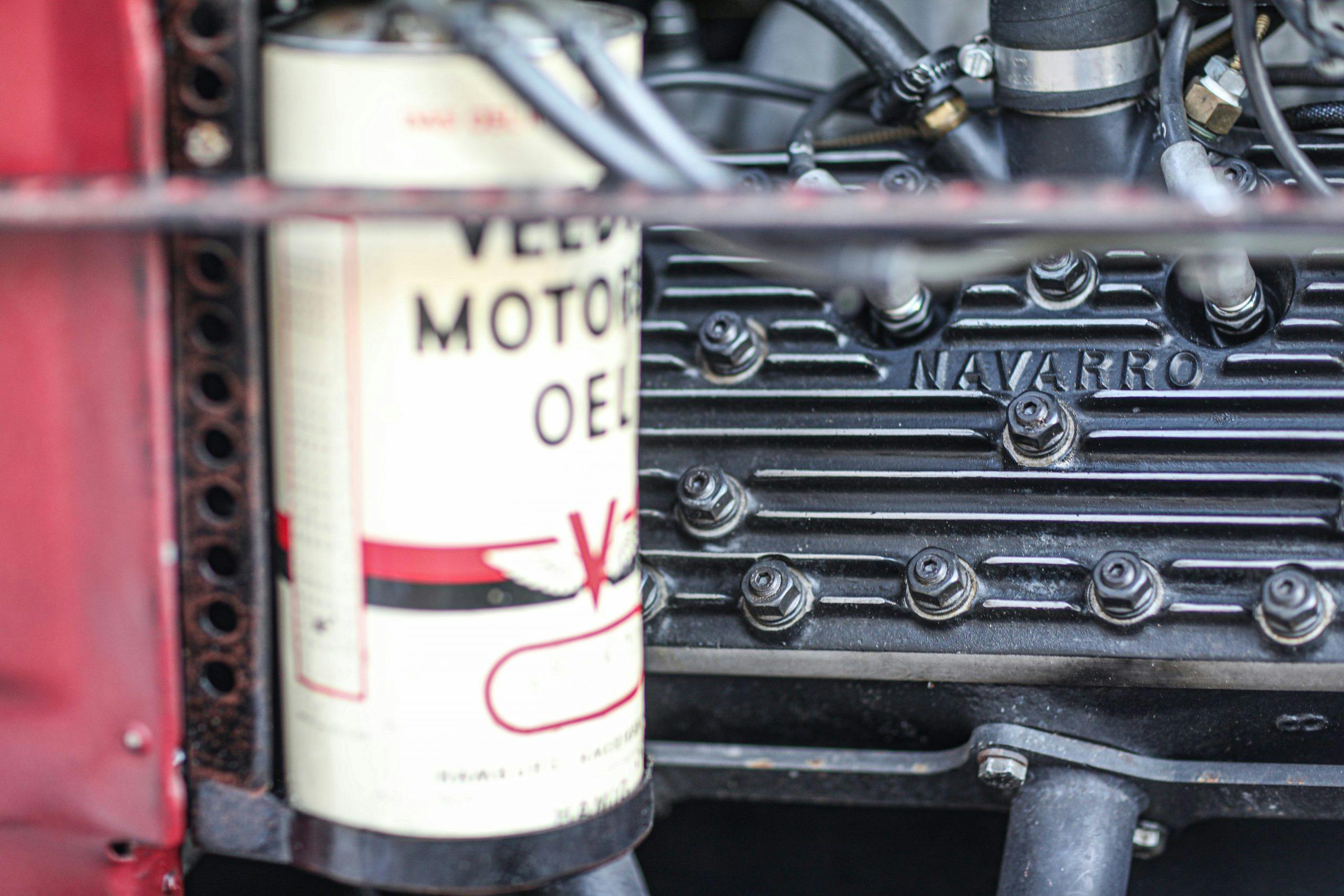

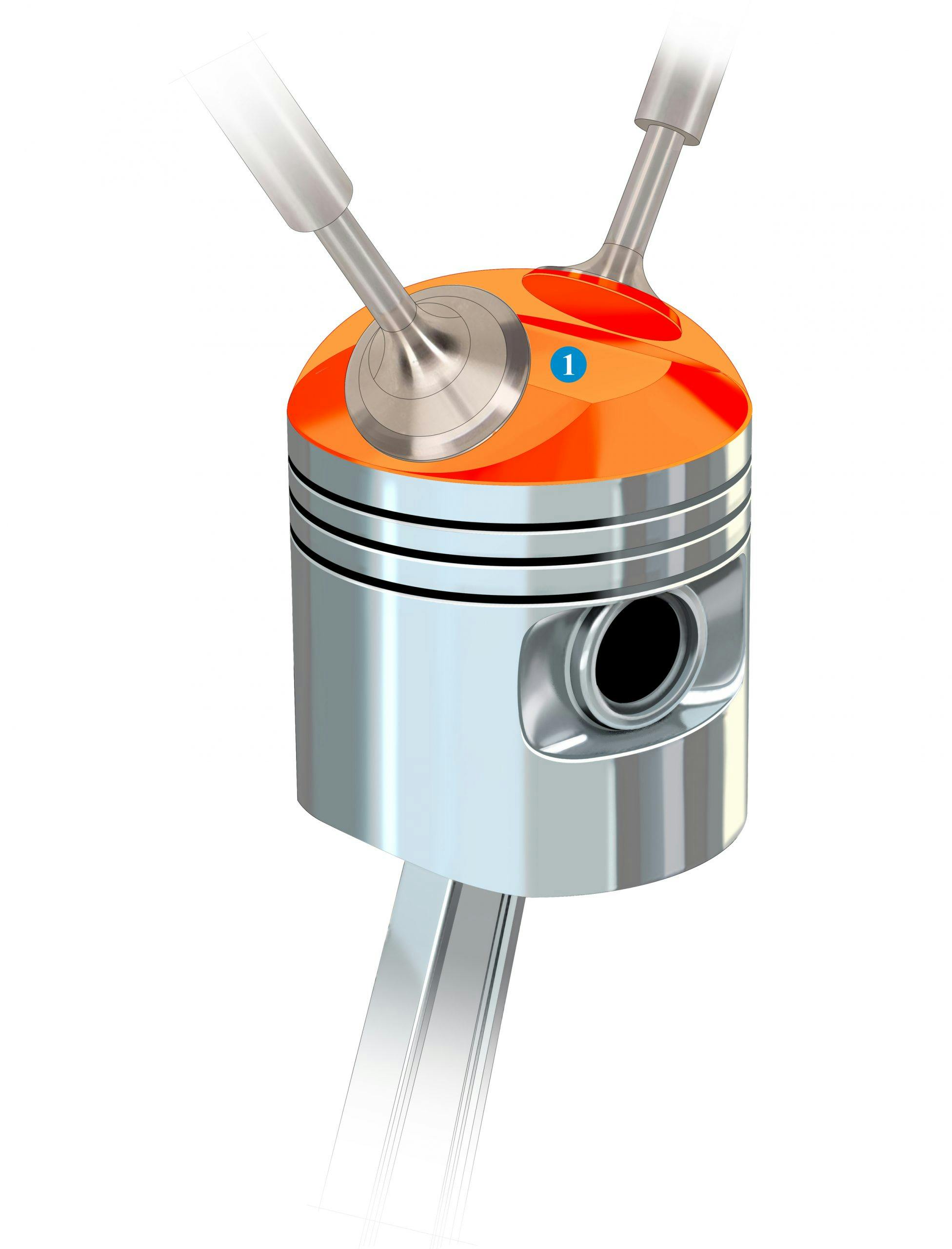


Back in my High School days (1949) a Girl in my school had a 1937 Ford coupe that her dad built with a 180 degree Norton crankshaft, (her dad) and it really had lots of tourk. Another friend of mine in 1956 had a Chrysler Hemi in his ’56 Ford pickup that had a 180 degree crank. It came out of his ’34 Ford lakes car called the Jado Spl.
I’ve never been into the antiques, so don’t know much about them. But I have to say my favorite factory engine is the 351C. Even a bone-stock 2V engine was fun, and they were in heavy cars then. My first car was a 72 Gran Torino Sport with that motor, and like many other guys, I can’t believe I ever sold it. I wanted a 4×4 real bad, so I found my 76 F-250 that I bought from the original owner. I have swapped it to a 460 Lincoln engine and a 5-speed transmission, I still have it, and it still has the original paint.
I decided in recent years that I wanted another performance car, and started seeking out another Torino. But since that 72 has now been in a couple popular movies, they had gotten to be more money than I was willing to invest. I sold mine for less than a grand, and now the cheapest one is like $4K for a stripped rustbucket. So I started searching for a Fairmont Futura instead, knowing there are lots of affordable parts for the Fox available, and found a running one locally for $150. It has now been completely rebuilt using a 92 Mustang as a donor, and swapped to a 96 Explorer 5.0 (with those fabulous 3-bar heads). It’s been quite a fun “budget” build!
I had a 95 F350 with a FI 460, and it was great. BTW, the Super Duty came out for the 99 MY, and they used the V10, not the 460. Some of the newest OBS trucks did say “F-250 Heavy Duty” though. Though we do have an Aviator (32V Cobra engine), I’m not a fan of the mod motor in big trucks, so switched to diesel. But that Godzilla is awfully tempting, and when they become reasonably-priced, I may ditch the Power Stroke, along with the maintenance expense.
Scott – there was also a Ford Super Duty model with the 460 (and the diesel engines) made from 1987-1996. It was a chassis/cab model and was essentially a F-450. I think that’s what the author was referring to in the article. As I recall, the badges on the fenders said “F-Super Duty” or something similar to that.
I have had several Ford V-8 powered cars. In High School 1965, I had a black 56′ Ford Victoria two door hardtop. The engine was built by a gentleman in Delphos, Ohio a Mr. Bill Place. It was a 1957 292 bored out with 312 pistons , 312 heads and a double pumper Holley 4 barrel. It had a Hurst shifted 3 -speed manual transmission and 4:11 open rear differential. When I beat 327 Chevys with ease the car owners would ask to see my engine. When they saw the Y-Block they could not believe it .
“However, when the beautiful lines of the Ford Model B were met with the power of the compact Flathead V-8” Just a little clarification, the 1932 Ford model B never came with a flat head V8 engine. Only the 1932 model 18 came with the flat head V8 engine. The model B only had the inline 4 engines like the model A. In fact, the model B was only produced because Ford was having trouble producing the castings for the V8 block and couldn’t meet the demand for the cars.
That’s correct Craig, thanks for pointing that out!
To correct – Ford’s first V8 was not the flathead of 1932. The Indy V8 was also not the only Ford engine to put the exhaust ports in the valley of the V. Ok, I’ll admit the engine was not of Ford’s design.
Lincoln – acquired by Ford in 1922 – had been using a cam-in-block flathead V8 since its inception in 1917. Spreading its cylinder banks at 60-degrees, both the intake and exhaust ports were placed in the valley of the V.
I’m not real knowledgeable on all this, but what about that Cobra engine from the late 90s and after? Thank you.
That’s a modular engine and covered under the modular variants entry in the article.
“It’s hard to understate the importance of the Flathead” — didn’t you mean “overstate”?
I did, thanks for pointing that out!
And then there was the Super Duty series 401 – 477 – 534 truck and industrial engines. They bespoke of torque and longevity from 58 thru the mid to late 70’s. Another victim of CARB, EPA, and high gas prices. 534’s were also modified and twin turbo’d as boat engines, “Sea Master”. I’ve owned 289, 302 HO, 292, 332 truck, and Super Duties, all great engines. Drove the Fire Truck with the 534 to a show last summer; $1.00/mi for gas. Oh-well gotta love’m all!!
I had a 1958 Ford Fairlane 500, 2dr. hdt. with a 352 cu.in. 300 hp., solid lifters. Best engine I have ever had and the most powerful engine ever. It came with a Holly 4-barrel carb. I regret today for ever selling that car. I am 80 years old and still today I love my cars. I tried several times to find my ’58 Ford (H) code. No luck so far.
#1 for me is the small block Windsor 260-302. I own a number of them and built and number of them. Simple, tough easy to work on motors. Fit in about anything too.
Same. Compact, inexpensive, simple and durable.
I had a bored-out 312 Y block that was balanced/blueprinted, Isky entire valve train, tri-carbs, massive headers, full race cam coupled to an aluminum flywheel and pressure plate. The sound and amazing performance of this engine in my ‘56 Ford Fairlane Victoria made many memories of beating 99% of any challengers. It could run all day at 6000 rpm. That was not a normal engine by any means. And that was in 1964. I never had it dyno tested, but it had all the power I ever needed. My present “all original 39k mile ‘56 Victoria”has a 292 with a single 4-barrel. It’s a beautiful black beauty, but lacks the massive hp of my first Victoria. I think the Y-blocks were a solid base to build an incredible sounding and high output engine.
In todays comments someone had already noted a 406 cid This part of the FE group it came after the 390 and thought to be Fords next entry into NASCAR but found it didn’t live up to their hopes. My understanding that it had kept dropping the bearings etc out the bottom, they even tried 4 bolt mains to correct this issue. With this issue they discarded the engine and had already started the design of the 427 for their race cars and then into street versions in 1963. Back to the 406 there were versions put on the street that were considered high performance. Some had a single Holly 4 bbl as a carb putting out 385 hp and also a 3 deuce setup putting out 405 hp. These came with a different heads than the 390 but also had alum intakes, headers, dual point distributors no vac advance, solid lifters. Engine production was only in 1962 left over engines into early 1963 models. Having talked to various ford owners a number of them don’t know that Ford ever built the 406. As a current owner of a 1963 Galaxie with the 385 hp setup, 4sp tranny,
in a convertible in the Chestnut color making it very sharp car.
Having owned a 1961 Ford Starliner in 1966 with the factory rated 375 hp 390, I always thought it curious that the 406 did not produce more power. That same 390, from what I’ve read, produced 401 hp with tri-power. These were solid lifter, big valve, factory header engines. Being 19 years old at the time I was all too happy to show the horde of tri-five Chevys what was what on the street. I also remember 6 miles to the gallon.
The 76 351 Windsor motor was easy to hot rod. Edelbrock intake, Holly 600cfm, headers and a true 21/2 inch exhaust with cherry bombs made my short wheelbase van. It made great gas mileage and would go as fast as you could drive a van.
In the 1970s the Windsor 351 was the motor to use on boats. It started with only a bump on the starter switch and was so quiet you had to look overboard to see if it was running…… unlike the GM motor.
Talked FE and no mention of the 428cj/scj????
Worth at least a line or 2..